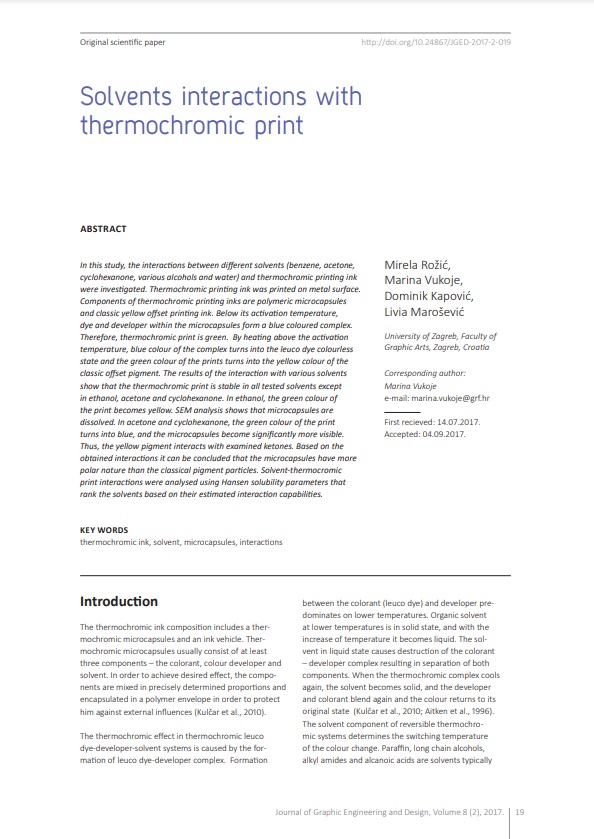
Published 2017-12-01
abstract views: 235 // Full text article (PDF): 194
Keywords
- thermochromic ink,
- solvent,
- microcapsules,
- interactions
How to Cite
Copyright (c) 2017 © 2017 Authors. Published by the University of Novi Sad, Faculty of Technical Sciences, Department of Graphic Engineering and Design. This article is an open access article distributed under the terms and conditions of the Creative Commons Attribution license 3.0 Serbia.

This work is licensed under a Creative Commons Attribution 3.0 Unported License.
Abstract
-
In this study, the interactions between different solvents (benzene, acetone, cyclohexanone, various alcohols and water) and thermochromic printing ink were investigated. Thermochromic printing ink was printed on metal surface. Components of thermochromic printing inks are polymeric microcapsules and classic yellow offset printing ink. Below its activation temperature, dye and developer within the microcapsules form a blue coloured complex. Therefore, thermochromic print is green. By heating above the activation temperature, blue colour of the complex turns into the leuco dye colourless state and the green colour of the prints turns into the yellow colour of the classic offset pigment. The results of the interaction with various solvents show that the thermochromic print is stable in all tested solvents except in ethanol, acetone and cyclohexanone. In ethanol, the green colour of the print becomes yellow. SEM analysis shows that microcapsules are dissolved. In acetone and cyclohexanone, the green colour of the print turns into blue, and the microcapsules become significantly more visible. Thus, the yellow pigment interacts with examined ketones. Based on the obtained interactions it can be concluded that the microcapsules have more polar nature than the classical pigment particles. Solvent-thermocromic print interactions were analysed using Hansen solubility parameters that rank the solvents based on their estimated interaction capabilities.

